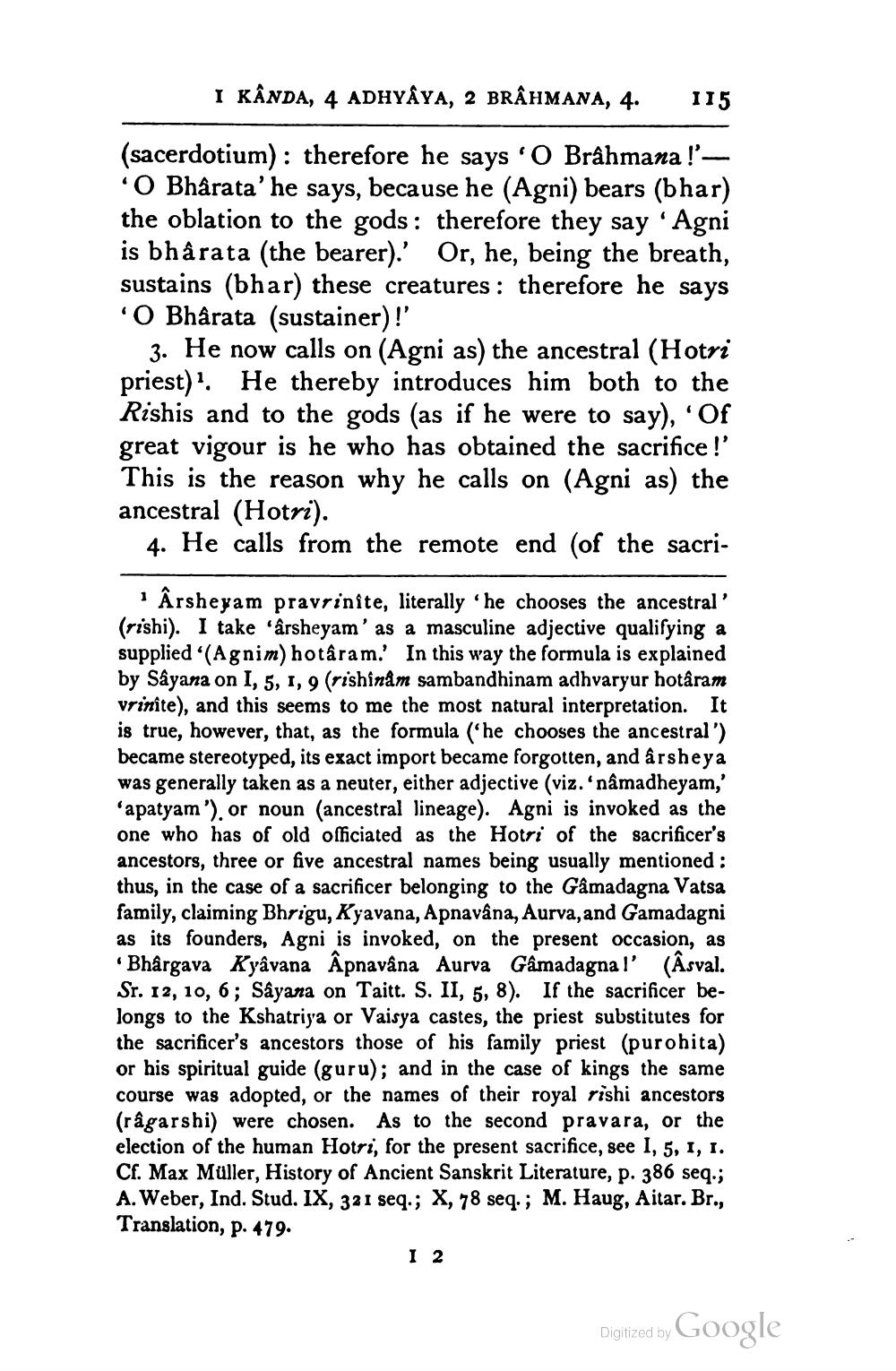________________
I KANDA, 4 ADHYAYA, 2 BRAHMANA, 4. 115
(sacerdotium): therefore he says 'O Brahmana!''O Bharata' he says, because he (Agni) bears (bhar) the oblation to the gods: therefore they say 'Agni is bharata (the bearer).' Or, he, being the breath, sustains (bhar) these creatures: therefore he says 'O Bharata (sustainer)!'
3. He now calls on (Agni as) the ancestral (Hotri priest). He thereby introduces him both to the Rishis and to the gods (as if he were to say), 'Of great vigour is he who has obtained the sacrifice!' This is the reason why he calls on (Agni as) the ancestral (Hotri).
4. He calls from the remote end (of the sacri
1Ârsheyam pravrinite, literally 'he chooses the ancestral' (rishi). I take 'ârsheyam' as a masculine adjective qualifying a supplied (Agnim) hotâram.' In this way the formula is explained by Sâyana on I, 5, 1, 9 (rishinâm sambandhinam adhvaryur hotâram vrinîte), and this seems to me the most natural interpretation. It is true, however, that, as the formula ('he chooses the ancestral') became stereotyped, its exact import became forgotten, and ârsheya was generally taken as a neuter, either adjective (viz. 'nâmadheyam,' 'apatyam'), or noun (ancestral lineage). Agni is invoked as the one who has of old officiated as the Hotri of the sacrificer's ancestors, three or five ancestral names being usually mentioned: thus, in the case of a sacrificer belonging to the Gâmadagna Vatsa family, claiming Bhrigu, Kyavana, Apnavâna, Aurva, and Gamadagni as its founders, Agni is invoked, on the present occasion, as 'Bhargava Kyâvana Apnavâna Aurva Gâmadagna!' (Âsval. Sr. 12, 10, 6; Sâyana on Taitt. S. II, 5, 8). If the sacrificer belongs to the Kshatriya or Vaisya castes, the priest substitutes for the sacrificer's ancestors those of his family priest (purohita) or his spiritual guide (guru); and in the case of kings the same course was adopted, or the names of their royal rishi ancestors (râgarshi) were chosen. As to the second pravara, or the election of the human Hotri, for the present sacrifice, see I, 5, 1, 1. Cf. Max Müller, History of Ancient Sanskrit Literature, p. 386 seq.; A. Weber, Ind. Stud. IX, 321 seq.; X, 78 seq.; M. Haug, Aitar. Br., Translation, p. 479.
I 2
Digitized by
Google




